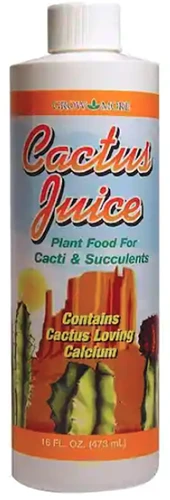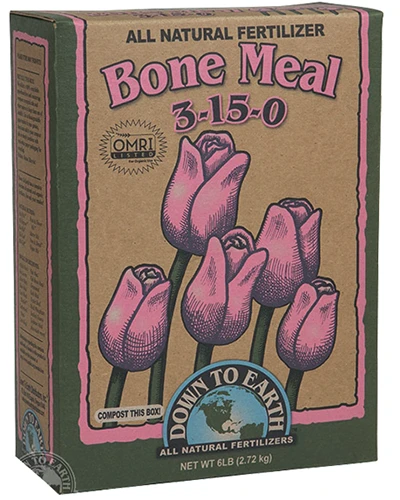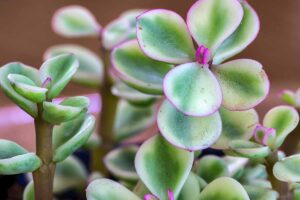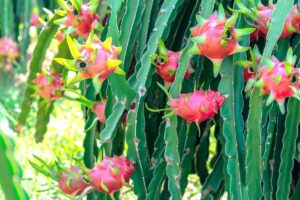Yuccas are handsome ornamentals, with long, spiky leaves that add vertical evergreen interest throughout the garden.
And they feature superb spikes of cream to white, bell-shaped flowers in summer – sometimes!
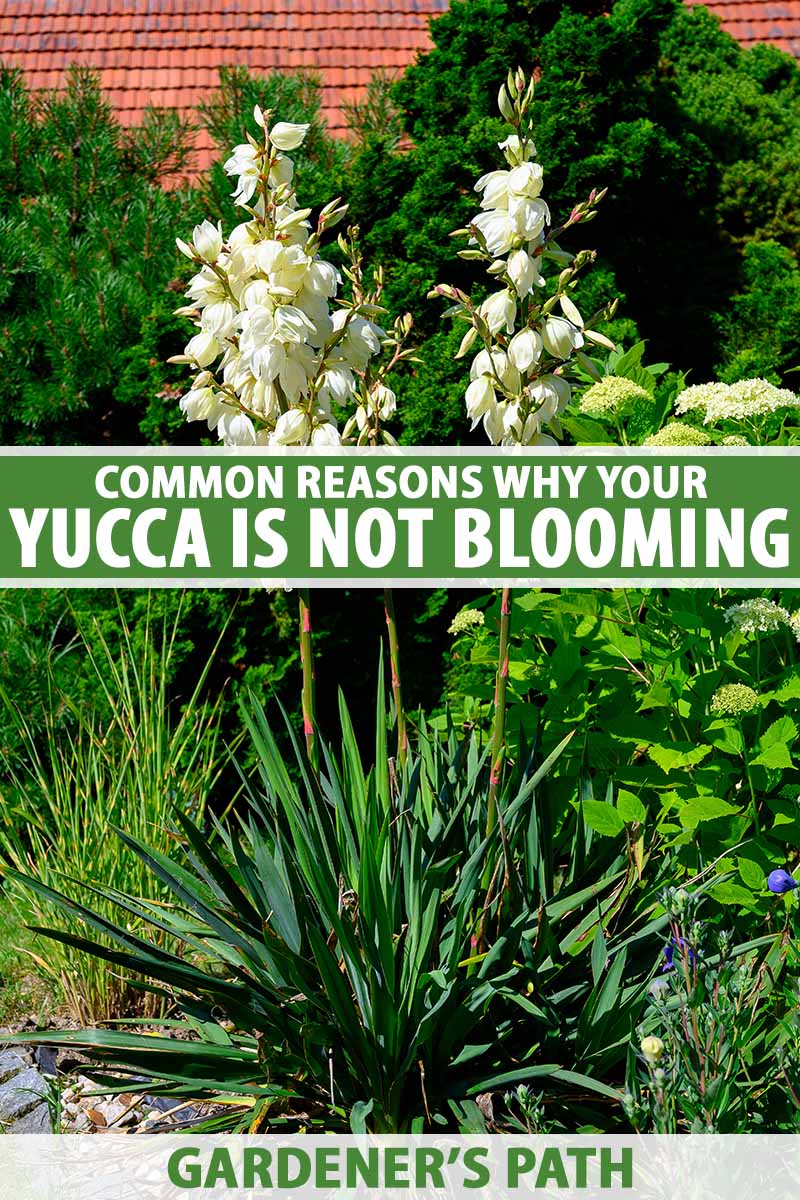
We link to vendors to help you find relevant products. If you buy from one of our links, we may earn a commission.
These easy-care perennial shrubs and trees hail from hot, arid regions of the Americas and the Caribbean. They need little in the way of care or maintenance to thrive.
But flower production is often spotty and hard to predict, leaving the gardener disappointed when they don’t bloom.
In ideal conditions, new plants in many species won’t flower until they’re about three years old. And sometimes, it can just take a new specimen a while to settle in before producing flowers.
Overwatering and overfertilizing can also hinder blooms… but not enough water or nutrients can do the same. And yuccas flower on individual rosettes, so pruning is another step that can help promote consistent flowering.
Fortunately, it only takes a bit of care and maintenance to encourage their dazzling appearance every year.
So if your garden is missing out on a regular show of yucca flowers, join us now for a look at the easy fixes for failing to bloom!
Here’s everything we’ll cover up ahead:
What You’ll Learn
Yucca Basics
Yucca is a genus in the agave subfamily of the asparagus (Asparagaceae) family that contains over 50 species of spiky bushes and trees that flourish in hot, arid regions of the Caribbean, Central America, and North America.
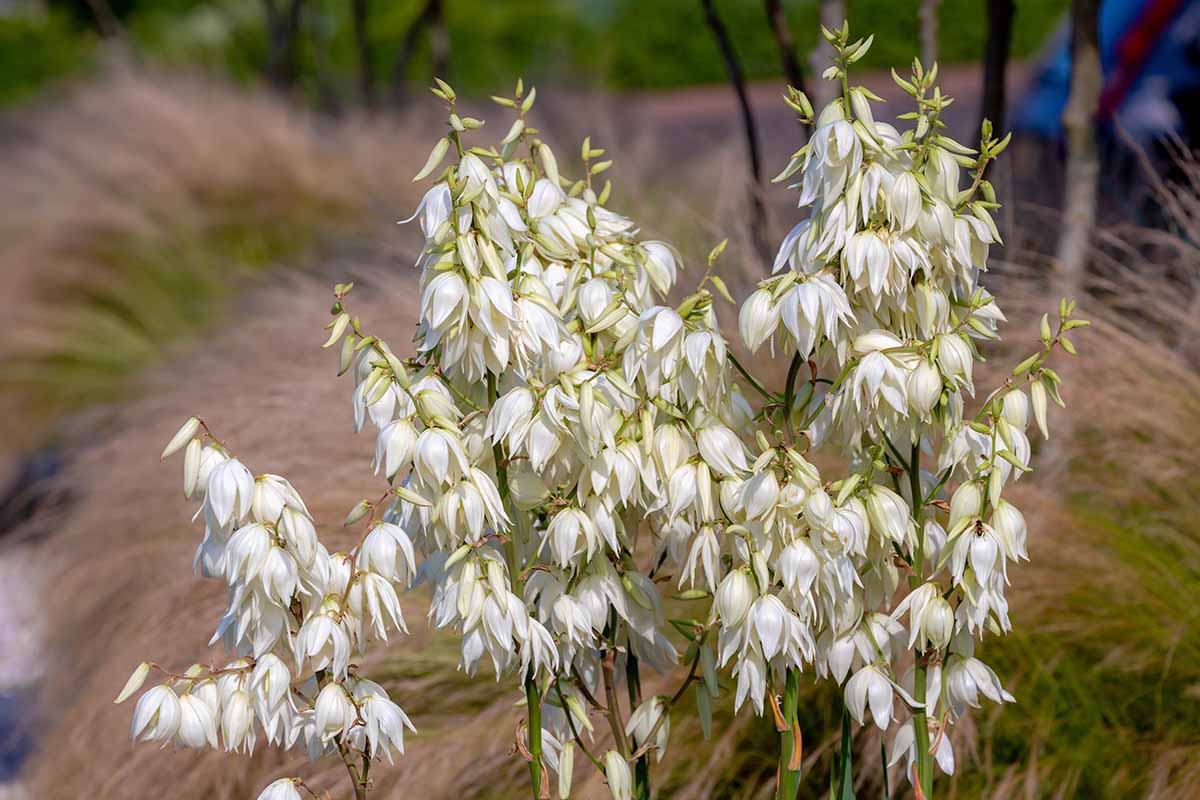
Sizes vary from compact, low-growing shrubs to large trees, like the Joshua trees (Y. brevifolia) which can live for 150 years!
Drought-tolerant succulents from desert regions, they can survive for months without water, using supplies stored in their trunks or bulbous bases instead.
The sharp, spiky leaves add outstanding texture to garden settings, making a dramatic specimen plant or handsome privacy screen, and many do well in containers as well.
Different species flower at different times. And flowering times can even vary between individual specimens, although they tend to appear during the warmest months of the summer growing season.
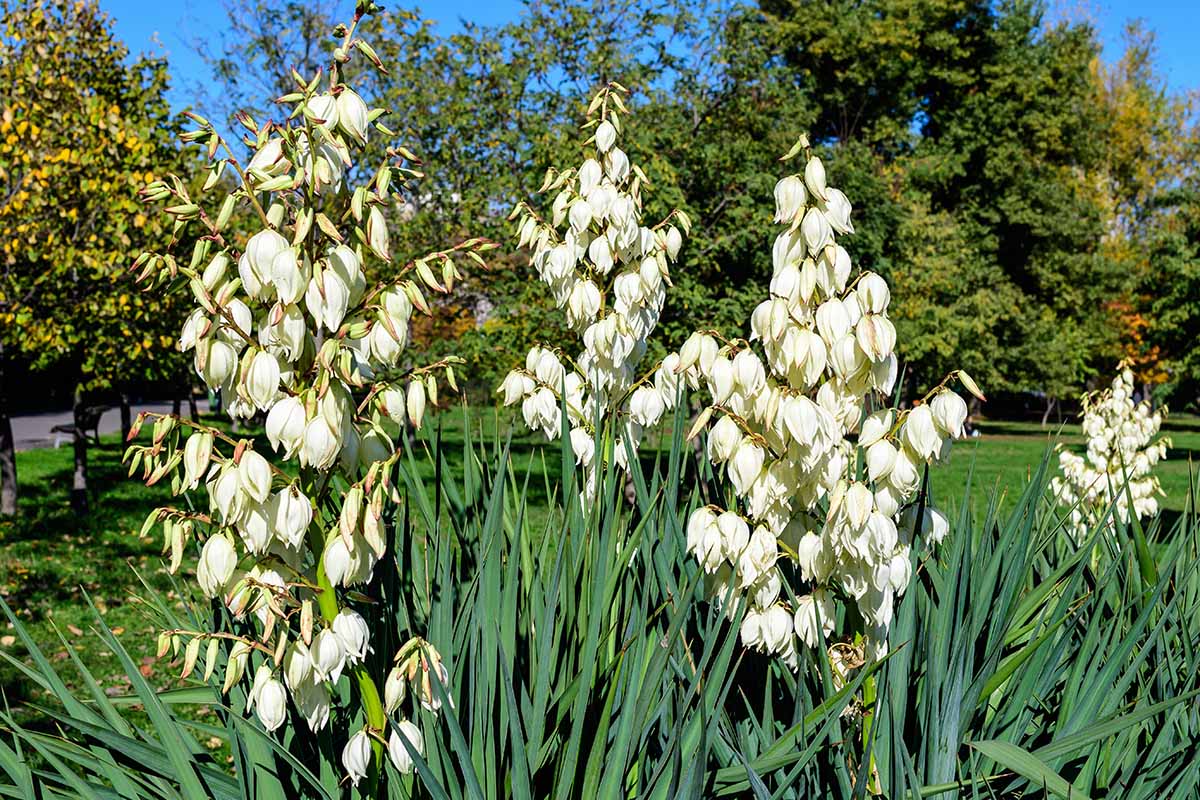
Yuccas spread by rhizomes, producing new rosettes, or offsets, that are attached to the parent plant.
Each rosette only flowers once, then slowly dies off – but plants begin producing new rosettes well before the old one disappears.
The main rosette can produce flowers in two to three years, given ideal conditions – but it can take up to five or even six years in partial shade or moist soil.
And as yuccas grow, they produce more and more rosettes, so the appearance of flowers typically becomes more frequent.
Unfortunately, indoor yuccas rarely receive the amount of light needed to bloom… don’t hold your breath waiting for these to flower!
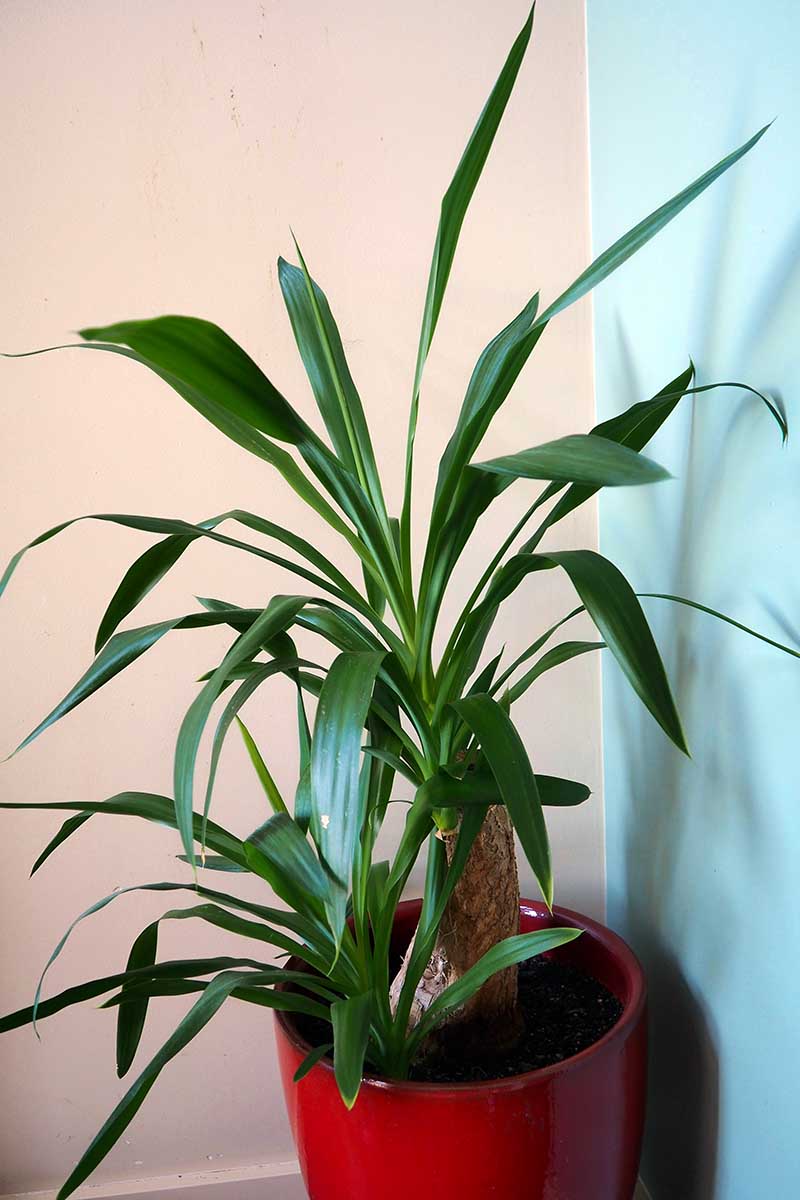
And while yuccas are typically hardy in USDA Zones 5 to 11, there are species able to handle colder conditions in Zones 4 and 3, such as Adam’s needle (Y. filimentosa) and small soapweed (Y. glauca).
You can learn more about how to grow and care for yucca plants in our guide.
Now, let’s look at some specifics to encourage those fabulous blooms.
Light and Location
To encourage blooms, give your yuccas a full sun location, even in areas with intense afternoon heat.
They can do well out of direct sunlight provided the light is bright – like when it gives a strong bounce or reflection off a fence or wall.
And they grow well in partial shade as well. But flowering is negatively impacted in low light or shady locations.
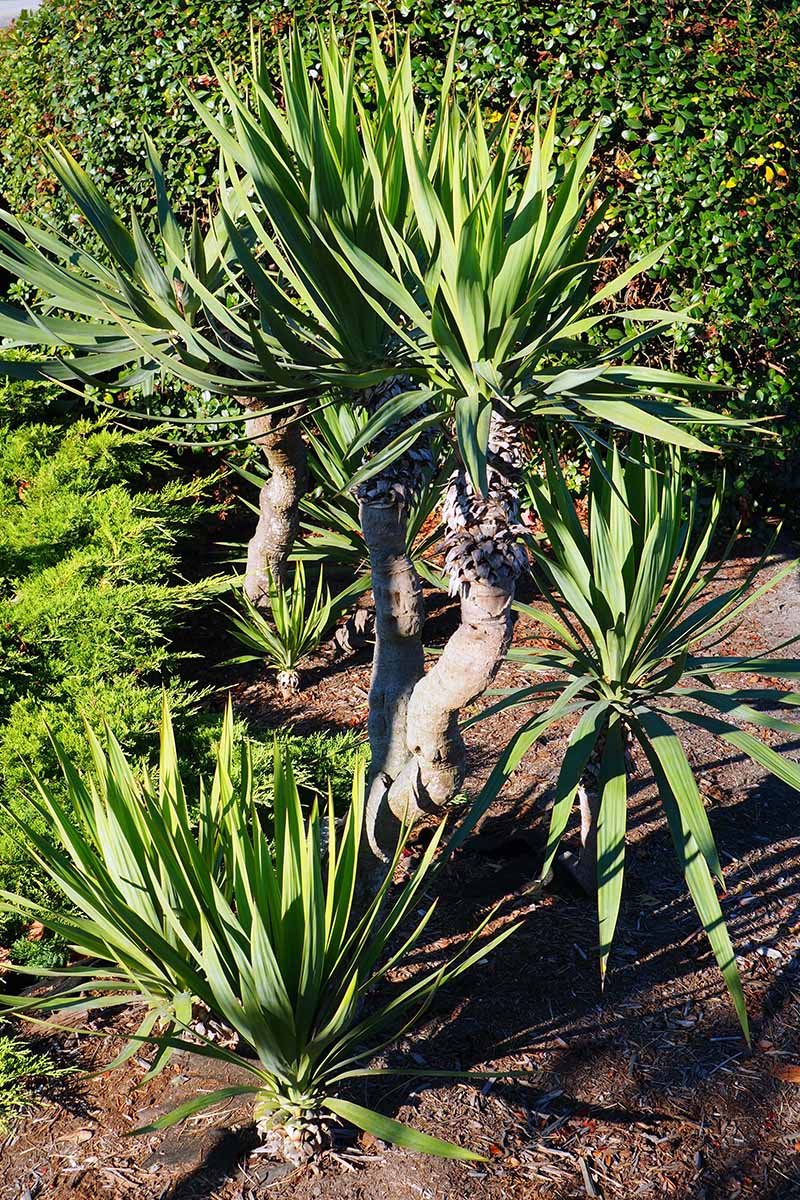
These plants also require soil with excellent drainage to prevent root rot, and prefer a gritty or sandy texture with a slightly acidic to neutral pH of 5.5 to 6.5.
Freezing temperatures can also cause flower buds to fail.
In locations that push the edges of a plant’s cold hardiness, or during unusual cold snaps, tie the outer leaves together over the main bud with a bit of string.
Come spring, the outer leaves might die off from the cold, but if the bud is intact and healthy, flowers are still likely.
Feeding and Water
Yucca is one of those rare plants that seems to thrive on neglect and poor conditions. While they grow well whilst being ignored, this tactic doesn’t always produce flowers in temperate gardens.
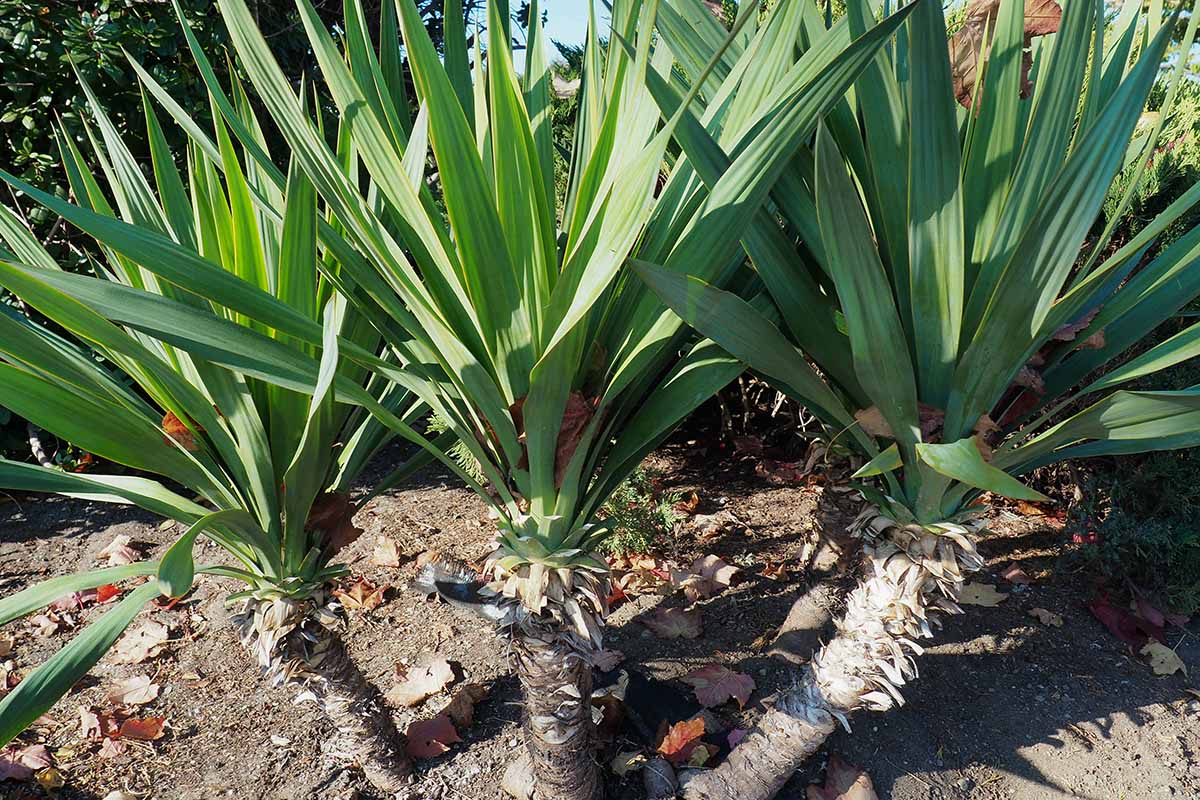
Give your plants a fighting chance to flower with regular water and fertilizer during the growing season.
Water your yucca every two to three weeks, watering thoroughly to a depth of 18 inches to ensure the entire root system is hydrated.
Fertilize every four to six weeks using a nutrient blend designed for cacti and succulents with a formula slightly lower in nitrogen and higher in phosphorus – this ratio helps to keep foliage manageable and shapely while focusing energy into flower development.
In fertilizer formulas, the N stands for nitrogen, P is for phosphorus, and K stands for potassium.
Grow More has a cactus and succulent fertilizer formula of 1-7-6 NPK in a 16-ounce bottle that’s available at Home Depot.
An alternative to cactus formula fertilizers is to use a balanced formula such as 10-10-10 NPK and work some phosphorus-rich bone meal into the soil in spring.
A five-pound box of DTE bone meal (3-15-0 NPK) can be found at Arbico Organics.
Container Care
For yuccas to thrive in containers, use large pots to support the substantial rhizomes and ensure they have drainage holes.
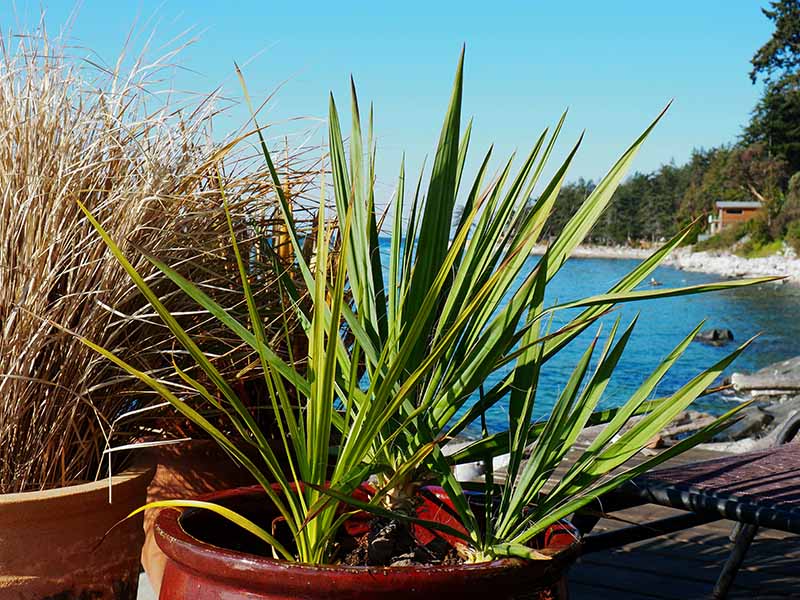
I prefer to add a two- to three-inch layer of drainage material to containers, such as pebbles or broken pottery, to keep water away from the roots.
Fill containers to three or four inches from the rim with a mix of potting medium and grit, such as coarse landscape sand, pea gravel, or granite chips – use 70 percent potting soil to 30 percent grit.
Choose cultivars that are suitable for your winter weather and that are a manageable size for containers.
Y. nana is a dwarf variety ideal for containers, and Y. filimentosa, Y. flaccida, and Y. gloriosa also work well in pots and planters.
Feed and water container plants more frequently than those grown in-ground. Water every one to two weeks or when the top two to three inches of soil is dry.
While regular watering is best to encourage flowers, resist the urge to overwater – which is one of the main reasons these plants fail or succumb to rot.
Fertilize container plants every three to four weeks as outlined above.
Containers and planters should be placed in the brightest light possible.
Find more tips on growing yucca plants in containers here.
Pruning
Pruning dead or dying leaves and old flower stalks can also help to encourage blooms. It focuses energy into new growth and flower production instead of trying to support dying materials.
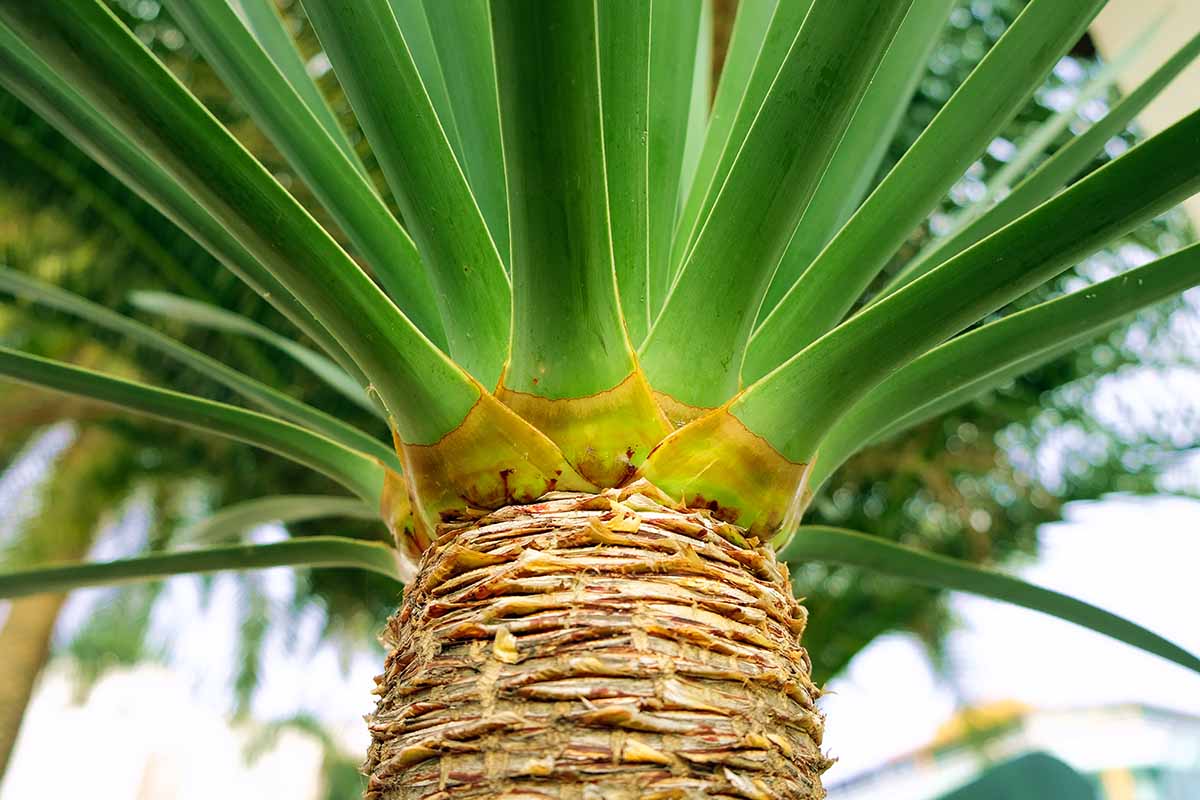
For best results, prune in early spring as plants are preparing for a new season of growth.
Use clean, sharp garden shears or scissors to cut off dead leaves at the bottom of rosettes, cutting close to the stem.
If you want to remove lower, downward-facing leaves – the ones that make a “skirt” – start at the bottom of the leaves, cutting close to the stem. Continue removing leaves to about halfway up the stalk or stop when you’re satisfied with the look.
After flowers have died off, remove the flower stalk by cutting about three inches above the stalk’s base.
Find more tips on pruning yucca here.
Bring on the Blooms!
With their tall stalks of handsome, bell-shaped blooms, yuccas add outstanding floral finery to the summer garden – and a few simple steps can help bring on the blooms year after year!
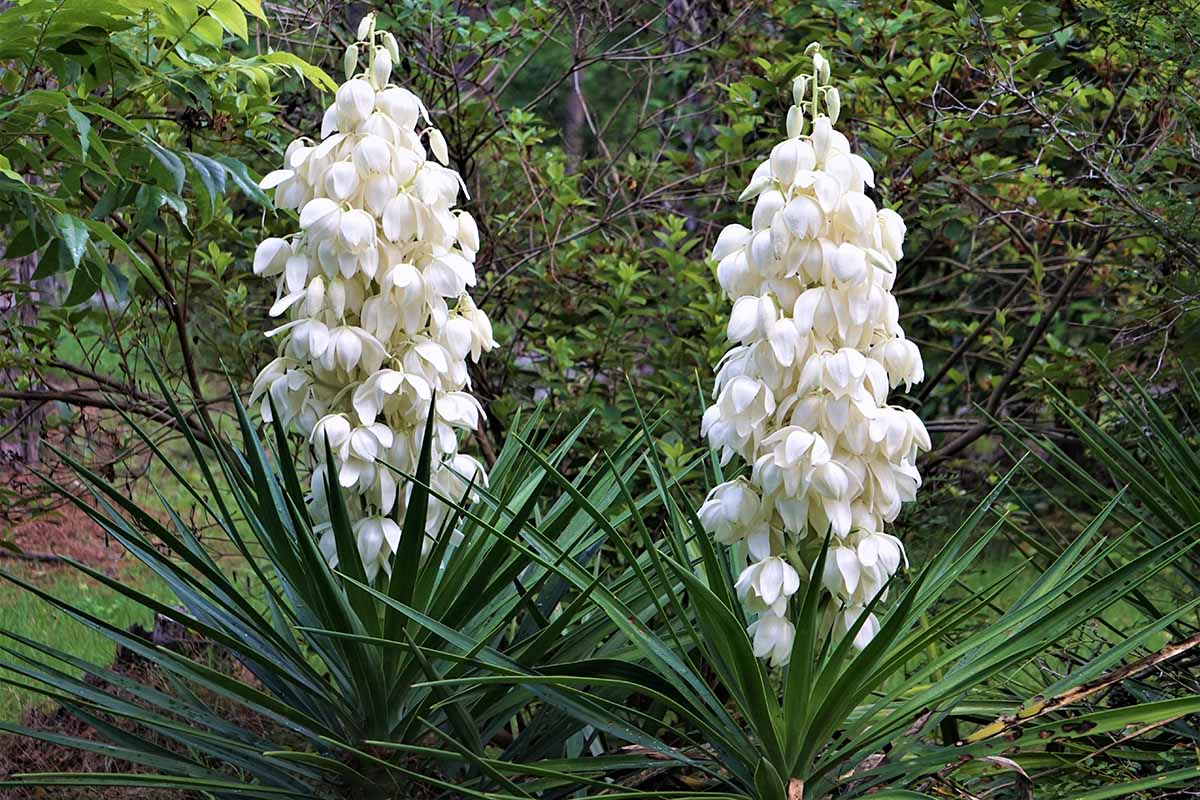
Water and fertilize regularly, and locate plants in the brightest light possible. Be patient with new plants as they can take a few years before flowering begins. It’s well worth the wait!
Do you folks regularly see yucca flowers on your plants? Share your blooming tricks in the comments section below.
And for more yucca info and tips, add these guides to your reading list:
